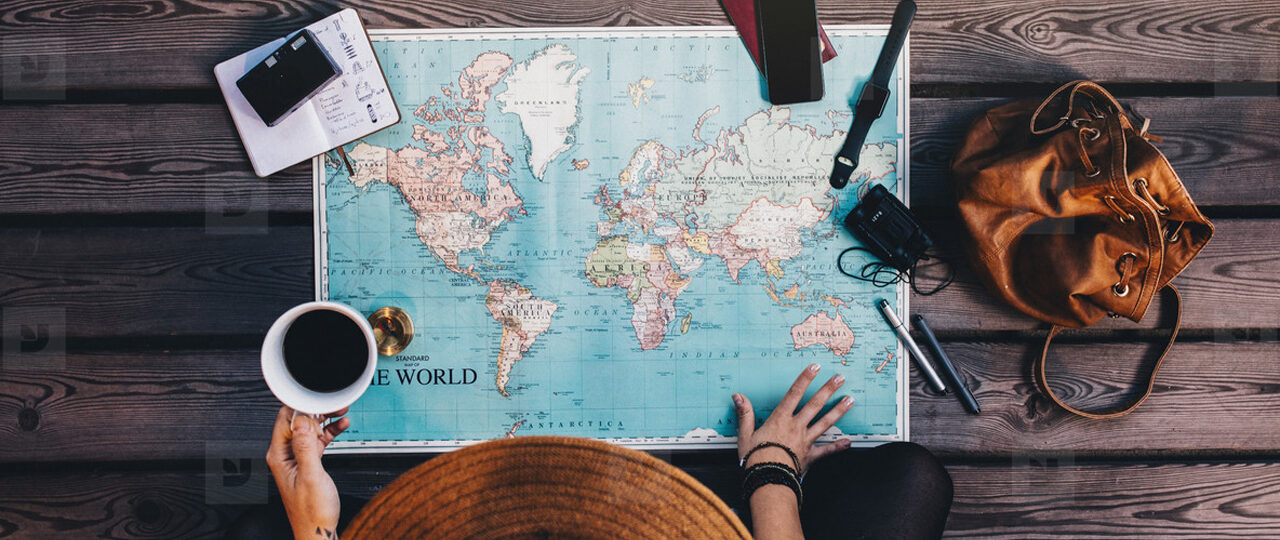Push and Pull Factors of Travel Motivation
The most frequently asked question in the tourism industry is to understand the reasons why people choose vacations or business trips, the ways in which they choose their vacations and the reasons why one travel company is preferred over another. More importantly, many research firms are looking for the answer to why tourists choose to travel when they travel. This question can be vital at times. We will analyse them under two headings as Push and Pull Factors.
Academics and experts from around the world have been researching this area extensively since the 70s. Various themes and models are presented to understand this.
Graham Dann’s (1977) thesis, described as the “Push & Pull model“, was one of the most frequently cited research ideas. According to this argument, tourists’ intrinsic desire to escape stress or to change daily routines and surroundings is said to be the main cause. In 1979, Crompton put forward another thesis. In this thesis, Crompton identified seven push motives towards a destination. These are escape, self-discovery, relaxation, prestige, visiting relatives, homecoming (homesickness) and social interaction. Innovation and education are pull motives. Mansfield (1992) and Iso-Ahola (1982) supported these theses. “Developing a Travel Career Approach to Tourist Motivation” by Pearce, PL and Lee, UI (2005) has been a very enlightening study recently.
Travel purpose and motivation are closely interrelated. These are typically classified into three broad categories: business travel, leisure travel and other purpose travel (e.g. for one’s health, cultural and historical interests and religious travel).
However, labeling tourists in this way only helps us understand the general motivations for their travel, but tells us little about their specific motivations or the needs and wants that underpin them, and whether these needs are being met. My aim here is to explain the terms and the complex relationship between the variables that shape the travel choices made by tourists of all kinds.

When we ask tourists about their reasons for traveling to a particular destination, we might get answers such as “It’s a place I’ve always wanted to visit”, “Some friends recommended it”, “The weather is always nice at this time of year and the beaches are beautiful, so we wanted to have a sea sand sun holiday” or “We have been going there regularly for the last few years”. While these views are appealing, they shed little light on the real motivation as they do not help to identify the needs and desires of tourists.
People often talk about what they need to go on a vacation, just like they need a new carpet, a new dress or a better car. But are they expressing a want or a need? Looking at these definitions in more detail, the term “Need” implies that the products we seek are essential to our daily lives, but this is rare with travel products. In general, need simply refers to the need for more goods and services, a clear sign from various aspects of the consumer-driven society we live in.
A vacation or a break from everyday life can become a real need over time. It can also be considered as stress relief in work life, because without a break, systems can break down mentally and physically. This can be perceived as a stress release for a busy and stressful career. Such data is scarce in our country, but foreign examples show that families and individuals experiencing severe poverty may also need a vacation, as research by certain organizations shows.
Let us continue by examining how we understand the concept of need through these definitions. In order to survive, people have certain physiological needs. Most of these are to provide people with food, drink, sleep, warmth and everything else necessary for survival.
Enjoying a different and experiential environment and getting away from the routine and stress of the workplace is the reason for some people to travel. Some travelers may want to take a vacation in the Swiss Alps, walking in the clean mountains, enjoying diverse landscapes, good food and complete relaxation. In other words, some travelers may want to visit archaeological, cultural, religious and historical itineraries. Travelers’ expectations influence the venue and its appeal.
Marketing experts define them under two headings as “push” and “pull” types of motivation. Thus, a tourist is “pushed” on vacation to get away from their daily life. On the other hand, various factors (advertising, etc.) are put in place to attract them to go to a certain place. Travel agencies are a great tool to convince customers to go on vacation. This is possible by knowing their clientele well and having their finger on the pulse of their travel needs and having the equipment and products to implement them. In addition, they must remember that when proposing this itinerary, they must show that it will best meet the needs of their customers.

Push Factors
As I mentioned above, Graham Dann (1977) was perhaps one of the first scholars to write about tourism–related pull and push factors. In particular, his work on Barbados showed that there was more interest in research on pull factors. His paper suggests that tourists choose to travel for reasons such as escape and nostalgia. As an additional researcher, Chris Ryan (1991) examined the factors that encourage travel to take place and categorized them into eleven themes:
- Motivation to escape from normal environments
- Relaxation and healing
- By giving adults the opportunity to return to childhood carefree
- Opportunity to strengthen family ties and spend time with family
- Gain status and respect among friends, both at home and on vacation
- Interaction with hosts and other guests
- Romance and sexual possibilities
- Opportunity for education and growth of the mind
- Opportunity for personal development, awareness and discovery throughout life
- Fulfillment of wishes and achievement of long-standing goals
- Shopping
Shopping is a common reason for travel, even if it may seem a bit mundane. Destinations such as New York, Calais in France and Dubai have attracted more tourists because of the shopping concept. More importantly, these motivations encourage individuals to travel. After this stage, the attractions come into play. Choosing which routes or vacation destinations to meet aspirations is all about attraction.

Pull factors
It is clear that tourists can have many different reasons for taking a vacation. These motives can be met in a variety of ways, so it is possible to distinguish one place from another by considering what is attractive to each.
Academics, such as John Richardson and Martin Fluker (2004), state that these “draw consumers towards a particular destination”. A variety of attractions, including the natural environment, cultural resources and hospitality, the availability and quality of amenities on the itinerary and facilities, opportunities for special events, infrastructure and accessibility, and favorable weather conditions are all factors that create a positive image of the itinerary as a safe, enjoyable and interesting place to travel.
There are many factors that help the tourist to choose the itinerary that best meets their motivations. However, certain attractive elements can motivate travelling. For example, the organisation of the 2012 Olympics in London encouraged some domestic tourists to visit the capital; if it were not for the Olympics, perhaps not so many people would have considered going to London. A spectacular exhibition in a special museum may attract travellers to the capital.
However, alternative research has suggested that the Olympics is an attractive element for special exhibitions or festivals and at the same time tourists may avoid visiting them. Increasing prices at special events and the concern that crowds will spoil the holiday experience may be the main reasons for this.
Even if tourism is defined only as a travel industry, it is based on in-depth research in various scientific fields such as anthropology, psychology and sociology. The results of this research also define tourist flows, orientations and advertising strategies. It is very difficult to talk only about tourism.
Gazali Turizm is the address where you can find the most up-to-date travel content today. With the understanding of being a reliable and efficient team with our experienced technical staff; We provide services in accordance with the country and world standards without compromising the principles of customer satisfaction and quality and timeliness.
As Gazali Tourism, we aim to be the first stop for people who love to holiday and travel with package tours, VIP car rental and transfer and hotel reservation all over Turkey. For more information, you can contact us and enjoy your holiday in Turkey.



